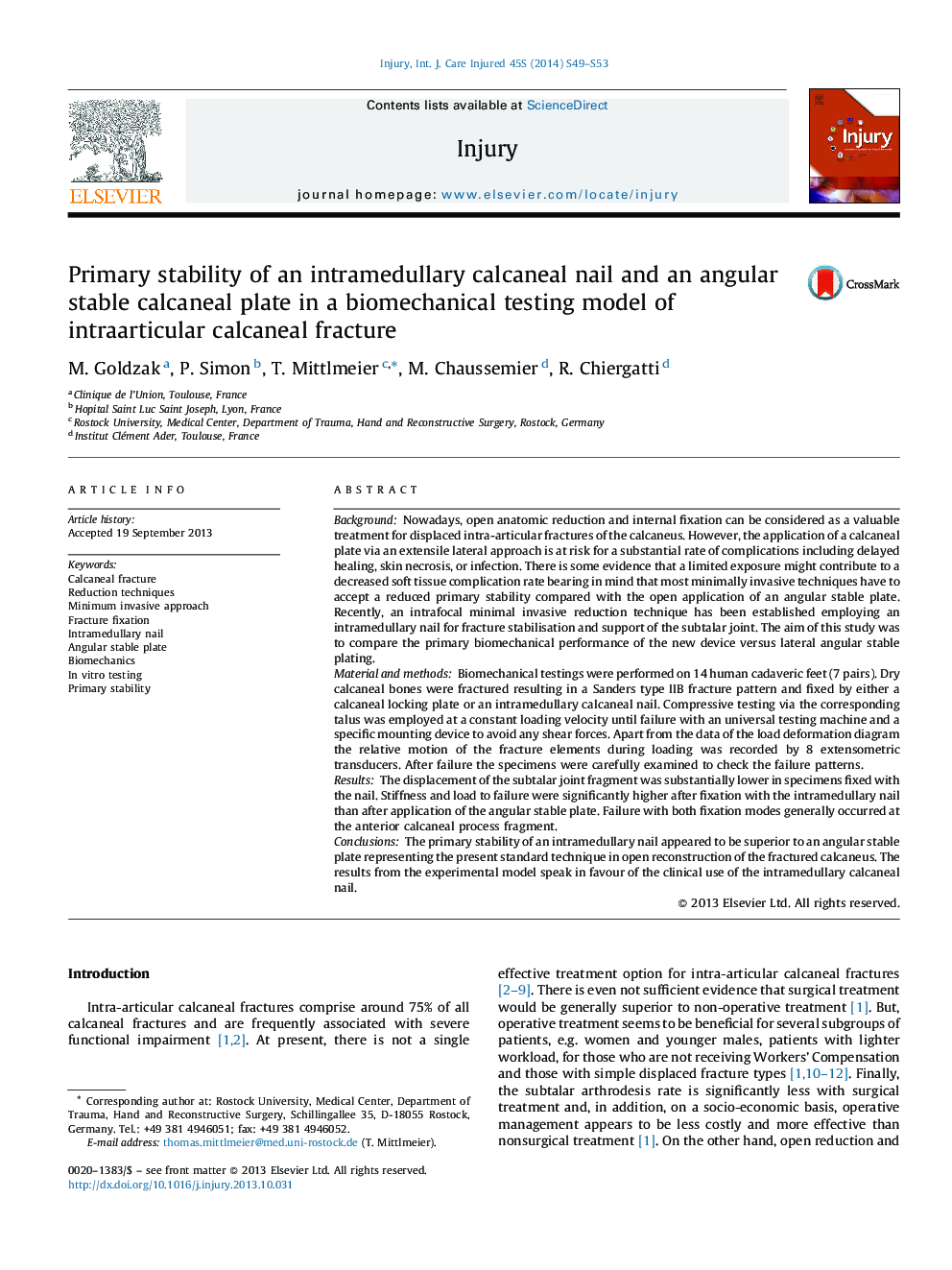| کد مقاله | کد نشریه | سال انتشار | مقاله انگلیسی | نسخه تمام متن |
|---|---|---|---|---|
| 3240106 | 1206031 | 2014 | 5 صفحه PDF | دانلود رایگان |
BackgroundNowadays, open anatomic reduction and internal fixation can be considered as a valuable treatment for displaced intra-articular fractures of the calcaneus. However, the application of a calcaneal plate via an extensile lateral approach is at risk for a substantial rate of complications including delayed healing, skin necrosis, or infection. There is some evidence that a limited exposure might contribute to a decreased soft tissue complication rate bearing in mind that most minimally invasive techniques have to accept a reduced primary stability compared with the open application of an angular stable plate. Recently, an intrafocal minimal invasive reduction technique has been established employing an intramedullary nail for fracture stabilisation and support of the subtalar joint. The aim of this study was to compare the primary biomechanical performance of the new device versus lateral angular stable plating.Material and methodsBiomechanical testings were performed on 14 human cadaveric feet (7 pairs). Dry calcaneal bones were fractured resulting in a Sanders type IIB fracture pattern and fixed by either a calcaneal locking plate or an intramedullary calcaneal nail. Compressive testing via the corresponding talus was employed at a constant loading velocity until failure with an universal testing machine and a specific mounting device to avoid any shear forces. Apart from the data of the load deformation diagram the relative motion of the fracture elements during loading was recorded by 8 extensometric transducers. After failure the specimens were carefully examined to check the failure patterns.ResultsThe displacement of the subtalar joint fragment was substantially lower in specimens fixed with the nail. Stiffness and load to failure were significantly higher after fixation with the intramedullary nail than after application of the angular stable plate. Failure with both fixation modes generally occurred at the anterior calcaneal process fragment.ConclusionsThe primary stability of an intramedullary nail appeared to be superior to an angular stable plate representing the present standard technique in open reconstruction of the fractured calcaneus. The results from the experimental model speak in favour of the clinical use of the intramedullary calcaneal nail.
Journal: Injury - Volume 45, Supplement 1, January 2014, Pages S49–S53
